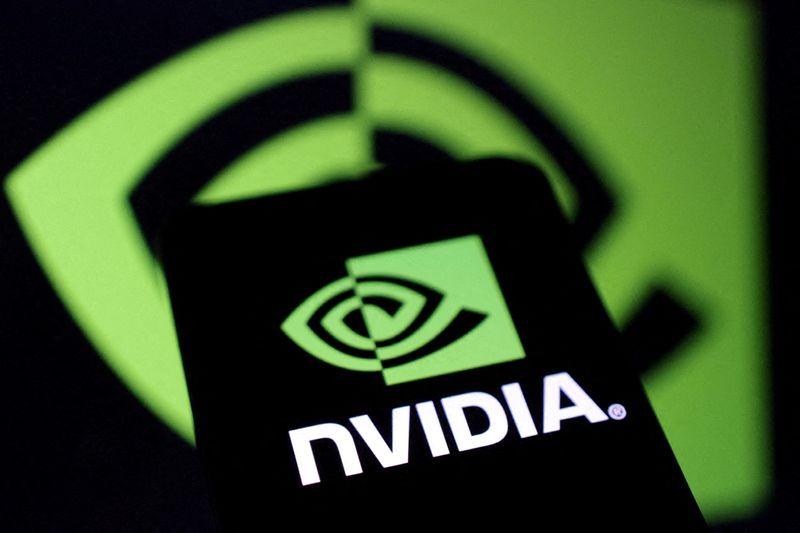By Liam Mo and Fanny Potkin
BEIJING/TAIPEI (Reuters) -Nvidia will launch a new artificial intelligence chipset for China at a significantly lower price than its recently restricted H20 model and plans to start mass production as early as June, sources familiar with the matter said.
The GPU or graphics processing unit will be part of Nvidia’s latest generation Blackwell-architecture AI processors and is expected to be priced between $6,500 and $8,000, well below the $10,000-$12,000 the H20 sold for, according to two of the sources.
The lower price reflects its weaker specifications and simpler manufacturing requirements.
It will be based on Nvidia’s RTX Pro 6000D, a server-class graphics processor and will use conventional GDDR7 memory instead of more advanced high bandwidth memory, the two sources said.
They added it would not use Taiwan Semiconductor Manufacturing Co’s advanced Chip-on-Wafer-on-Substrate (CoWoS) packaging technology.
The new chip’s price, specifications and production timing have not previously been reported.
The three sources Reuters spoke to for this article declined to be identified as they were not authorized to speak to media.
An Nvidia spokesperson said the company was still evaluating its “limited” options. “Until we settle on a new product design and receive approval from the U.S. government, we are effectively foreclosed from China’s $50 billion data center market.”
TSMC declined to comment.
China remains a huge market for Nvidia, accounting for 13% of its sales in the past financial year. It’s the third time that Nvidia has had to tailor a GPU for the world’s second-largest economy after restrictions from U.S. authorities who are keen to stymie Chinese technological development.
After the U.S. effectively banned the H20 in April, Nvidia initially considered developing a downgraded version of the H20 for China, sources have said, but that plan didn’t work out.
Nvidia CEO Jensen Huang said last week the company’s older Hopper architecture – which the H20 uses – can no longer accommodate further modifications under current U.S. export restrictions.
Reuters was unable to determine the product’s final name.
Chinese brokerage GF Securities said in a note published on Tuesday that the new GPU would likely be called the 6000D or the B40, though it did not disclose pricing or cite sources for the information.
According to two of the sources, Nvidia is also developing another Blackwell-architecture chip for China that is set to begin production as early as September. Reuters was not immediately able to confirm specifications of that variant.
Story Continues

